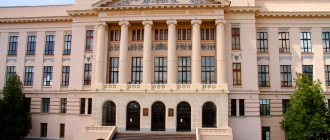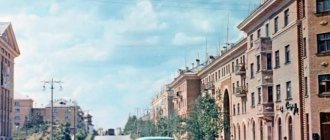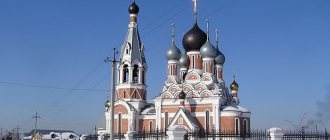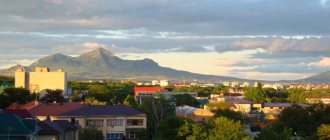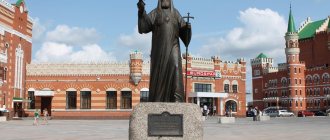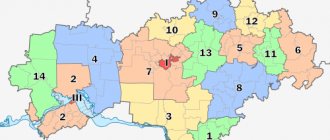Yoshkar-Ola is the capital of the Mari El Republic. The city was founded at the end of the 16th century on the banks of the Malaya Kokshaga River. Some residents of the country do not know where Yoshkar Ola is located. It is located in the Mari Lowland, near the taiga zone.
The city's climate is characterized by cold winters, but also warm summers. The city has the Malaya Kokshaga River. She divides it into two parts.
Diversity of Nationalities
As for the ethnic composition of the city, it has 96 different peoples. The majority of the population in the territory is Russian - 68%. Next come the indigenous Mari - 24%. The third place in number is occupied by the Tatar peoples - 4.3%. In addition to the main national composition, the urban population of Yoshkar-Ola consists of:
- Chuvash;
- Ukrainians;
- Azerbaijanis;
- Armenians;
- Uzbeks;
- Belarusians;
- Udmurts;
- Georgians;
- Germans and many others.
Automobile highways
Federal highways pass through Yoshkar-Ola:
- P176 “Vyatka” is a federal highway. The total length of the route is 872 km. The road originates in Cheboksary and passes through Yaransk, Kotelnich, Yoshkar-Ola. The final point of route P176 is the city of Syktyvkar. The road surface of the route is asphalt concrete.
- A295 is a federal highway with a total length of 126 km. The road starts in Yoshkar-Ola and passes through Zelenodolsk and Volzhsk. The end of route A-295 is the M-7 Volga highway.
Districts of Yoshkar-Ola
By tracking the growth of the territory of Yoshkar-Ola on the map, you can see that over the years 20 nearby villages and suburbs were annexed to the capital of Mari El.
The district of the city, in addition to Yoshkar-Ola, consists of the following settlements: the settlement of Apshakbelyak, the village of Semyonovka, the villages of Ignatyevo, Nolka, Danilovo, Savino, as well as Shoya-Kuznetsovo, the village of Akshubino, the village of Yakimovo, the village of Kelmakovo.
The following microdistricts are identified in the urban area: Berezovo, Alyonkino, Bolshoye, Bolnichny, Vostochny, Chigashevo, Dubki, Gomzovo, Zvezdny, Integral, Mashinostroitel, Leninsky, Molodezhny, Mirny, Nagorny, Myshino, Nikitkino, Orshansky, Oktyabrsky, Pribrezhny, Prezavodskoy, Sverdlova , Repair Plant, Soviet, Northern, Sports, Szombathely, Central.
The division of the city into districts began in the 20th century. In the 70s, Yoshkar-Ola on the map was actually divided into 2 districts: Zavodskoy and Leninsky, which included residential areas as well as rural areas.
The factory urban district united: Sidorovsky village council of the Medvedevsky district, Kokshaysky (the village of Kokshaysk and the suburban village council, which was later abolished).
Leninsky district consisted of several village councils: Kuyarsky, Solnechny, Kundyshsky and Semenovsky.
YOSHKAR-OLA
YOSHKAR-OLA, a city in Russia, the capital of the Mari El Republic, forms the mountains. district Population 274.7 thousand people. (2019). J.-O. located in the center. parts of the republic, on the river. Malaya Kokshaga (left tributary of the Volga). Railway station. Road junction. Airport.
Story
Yoshkar-Ola. Church of Our Lady of Three Hands in the former home of I. A. Pchelin. 18th century
Founded in 1584 by decree of Tsar Fyodor Ivanovich as the “Tsarev City” fortress on the lands of the Cheremis (Mari) annexed to the Russian state. To distinguish it from other cities with the same name, they began to write it as “Tsarev city on Kokshaga” or “Tsarev Kokshaisky”, in the end. 16 – beginning 17th centuries The names Kokshazhsk, Kokshats(zhs)ky town were also used, in the 1st half. 17th century the name was assigned to the city. Tsarevokokshaysk. It was subordinate to the Order of the Kazan Palace and had important defensive significance. Residents of the city (streltsy and Cossacks) served as border guards and also collected tribute (yasak) from the local Mari population. In the 17th century gradually lost its military significance, the main occupation of the population became agriculture (including the cultivation and processing of hops), as well as trades (fur, logging, distilling) and trade. In 1708–1920, a district town in the Kazan province (in 1781–96 – Kazan governorship). From the beginning 18th century The Alexander-Elizabeth Fair was held here, and merchant dynasties formed (Ganeshevs, Talantsevs, Bulygins, Pchelins). In addition to the Russian population (mainly immigrants from the central provinces of the Russian Empire), the so-called. newly baptized (Mari and Mordovians who converted to Orthodoxy).
Yoshkar-Ola. Cathedral Mosque. Con. 1990s
From the 2nd third of the 19th century. Tsarevokokshaisk is a place of political exile (participants of the Polish uprising of 1863–64 were exiled here, in particular). After the October Revolution of 1917, Soviet power was established peacefully in the city. 17.2.1919 renamed Krasnokokshaysk. From June 18 to November 25, 1920 it was part of the Vyatka province. In 1920–36 the center of the Mari Autonomous Okrug (at the same time in 1920–21 the center of the county, in 1921–31 the center of the canton). In 1927 the city was connected by the Moscow-Kazan railway line. from the village Zeleny Dol (now Zelenodolsk). 25.1.1928 renamed J.-O. (Mar. – “Red City”). In 1936–90 the capital of the Mari Autonomous Soviet Socialist Republic, in 1990–92 – the Mari SSR, from 1992 – the Republic of Mari El. Since 1931 it has been a city of regional (since 1936 republican) significance. In 1941, during the Great Patriotic War, in J.-O. The equipment of industrial enterprises was evacuated, which became the basis of modern large factories: Mari machine-building, commercial engineering (now Mariholodmash), semiconductor devices. In 1953, part of the railway was built. line Yoshkar-Ola - Yaransk, in 1976 a permanent railway was opened. communication along the Yoshkar-Ola - Yaransk line of the Gorky Railway. In 1990–2010 it had the status of a historical city of Russia. Since 2005, the center of the mountains. districts.
Architecture
Preserved: Ascension Cathedral (1756; closed in 1937, returned to the Russian Orthodox Church in 1992, active since 1995) and Ch. the house of the estate of the merchant I. A. Pchelin (18th century), the stone building of the New Epiphany school (1749) at the Trinity Church. (1736), Tikhvinskaya c. (1774); ancient houses - stone and wooden, with carved platbands, cornices, porches and gates. The general plan for the development of the city was approved in 1835. Of the buildings of the con. 19 – beginning 20th centuries preserved: the house of I.V. Chulkov, the houses of industrialists Naumov and Bulygin. In 1937, the House of Soviets was built in the forms of late constructivism (architect A. Z. Grinberg, engineer P. S. Shorin; now Mar. State University and other institutions). According to the general plan of 1948, buildings were erected in the neoclassical style (National Drama Theater named after M. Shketan, architect M. F. Ni, engineer P. A. Samsonov; former Sovetskaya Hotel, architect I. I. Vinogradov; both 1960), residential buildings with brightly colored details and colorful ornaments; later – Government House, city building. administration. Cathedral Mosque (late 1990s). In the 2000s. Major construction projects are underway under the Capital program. work. Built: Ice Palace, Assumption Church (both 2006), Chapel of St. Nicholas (2007), etc. Monuments: V.I. Lenin (1966, sculptor M.G. Manizer, architect I.E. Rozhin), the first governor of the city, Prince. I. A. Obolensky-Nogotkov (2007, sculptor A. N. Kovalchuk).
Centers of science and culture
Among scientific institutions – Mar. Research Institute of Language, Literature and History named after. V. M. Vasilyeva, Mar. Institute of Education. State universities: Mar. technical University (its history dates back to the Forestry Faculty of Kazan University, since 1922 in Y.-O.; the name and status have changed several times, the current name has been since 1995), Mar. pedagogical Institute named after N.K. Krupskaya (1931), Mar. University (1972). Among the non-state universities are the Interregional Open Social Institute (2003), the Institute of International. trade and law. Moscow branches and Kazan universities. National fuck them. S. G. Chavaina (founded in 1876, opened in 1877; current name and status since 1922). National Museum of the Republic of Mari El named after. T. Evseeva (1920), Republican Museum of Fine Arts (1981; building - 1980, architect V. I. Babenko), House-Museum of the writer N. S. Mukhin (1990), Museum of the History of Yoshkar-Ola (1996), Museum folk applied art (1999), House-Museum comp. I. S. Klyuchnikova-Palantaya (1960). National Drama Theater named after M. Shketana (1919), Rus. Drama Theater named after G. Konstantinova (1937), Republican Puppet Theater (1942), Mari Opera and Ballet Theater, Youth Theater (1991). State Philharmonic Society (1939; now named after Y. Eshpai). State choir chapel (1981; now named after A.I. Iskandarov). Ensemble of folk instruments “Mari Kundem” (1984).
International festivals: Russian theaters of the republics of Russia and foreign countries (annually), theaters of the Finno-Ugric peoples “Mayatul” (once every 2 years), opera and ballet theater “Winter Evenings” (since 1996, annually); All-Russian festival-competition russian romance "White Acacia" (since 2003), art festival "Mari Autumn" (annually), festival in honor of Galina Ulanova.
Sport
The Druzhba football club (founded in 1962) plays its matches at the stadium of the same name (built in 1961; seats 12.5 thousand spectators). Ice Sports Palace "Mari El" for 2.5 thousand seats.
Farm
Among the leading enterprises of the city, machine-building industries predominate. Mari Machine-Building Plant (1941) is the largest republican enterprise of the military-industrial complex, part of the Almaz-Antey concern; produces air defense equipment (including anti-aircraft missile systems), as well as equipment for the agro-industrial complex, woodworking machines, electrical products, etc. “Special Design and Technology Bureau “Crystal”” (1970) produces products from metal powders for the automotive industry industry, agricultural engineering, railways transport, electrical engineering; pumps for the chemical industry and ultrasonic cleaning equipment, - forestry equipment, production association "Inreko" - tools for metalworking. Contact (1964; also produces resistors and automotive electronics) also specialize in the production of commercial refrigeration equipment. The production of electrical engineering and instrumentation has been developed: "Rodina Association" (1991; electrical products, electronic components for the automotive industry), "Nata-Info" (1989; LED equipment), "Semiconductor Devices Plant" (1941; metal-ceramic cases for special purposes for integrated microcircuits and semiconductor devices), SKB "Khromatek" (1991; gas chromatographs and gas chromatography-mass spectrometers, equipment for gas purification and analysis of oil and petroleum products). Chemical industry enterprises play an important role in the city’s economy: “Artificial Leather Plant” (a large Russian manufacturer of artificial leather, awning and film materials) and “Marbiopharm” (1942; medicines, biologically active and food additives, substances, etc.), scientific -production company "Genix" (liquid detergents and disinfectants. J.-O. also produces steel doors (Intekron, metal structures "Vybor", "Portal"), furniture (furniture factories "Elf", "Mari" furniture 12", "M Dorf"), building materials ("Balaton Group" - building metal structures; "Stroykeramika" - ceramic brick); there are light goods enterprises (Yoshkar-Olinskaya shoe factory, Yoshkar-Olinskaya hosiery factory "Maritex") and food [ plant for the production of frozen bakery semi-finished products "Rus-Bakery", Yoshkar-Olinsky meat processing plant, Yoshkar-Olinsky confectionery factory (1944; since 2003 as part of the United Confectioners holding)] industry; The thermal power plant is operating.
50 km north of the city is the Mari Oil Refinery (one of the largest enterprises in the Republic of Mari El; capacity is 1,250 thousand tons of oil per year).
Neighborhood
Near J.-O., in the village. Ezhovo, - female Myronositsky [in honor of the Myrrh-Bearing (Tsarevokokshayskaya) Icon of the Mother of God] mon. [founded in the 17th century. as men's, closed in 1924, revived in 1993–94; preserved: c. Holy Myrrh-Bearing Women with a tented bell tower (both 1710s), fraternal building, 18th century, etc.].
Bruges waterfront
One of the most beautiful streets of Yoshkar-Ola is the Bruges Embankment. This most picturesque place in the city is located on the banks of the local Kokshaga River. This “piece of Belgium” is recreated based on the Belgian architecture of the city of Bruges. A real decoration of the embankment are the houses lined up along the entire street with colored roofs, windows of different sizes, tubes and turrets.
The opening of the Bruges Quay took place in 2010.
Train Station
The Yoshkar-Ola railway station is a station in the Kazan region of the Gorky Russian Railways, which is located on the 106th km of the Zeleny Dol - Yaransk section. The number of platforms is 2, the number of departure tracks is 10. The railway station is located at st. Yanalova, 3. The railway station building houses a spacious waiting room, ticket offices, and storage room for luggage and personal belongings. There is also a medical center and a cafe at the station.
A long-distance train departs from the Yoshkar-Ola railway station in the direction Yoshkar-Ola - Moscow. Suburban trains that go to Kazan and Tabashino are also serviced.
